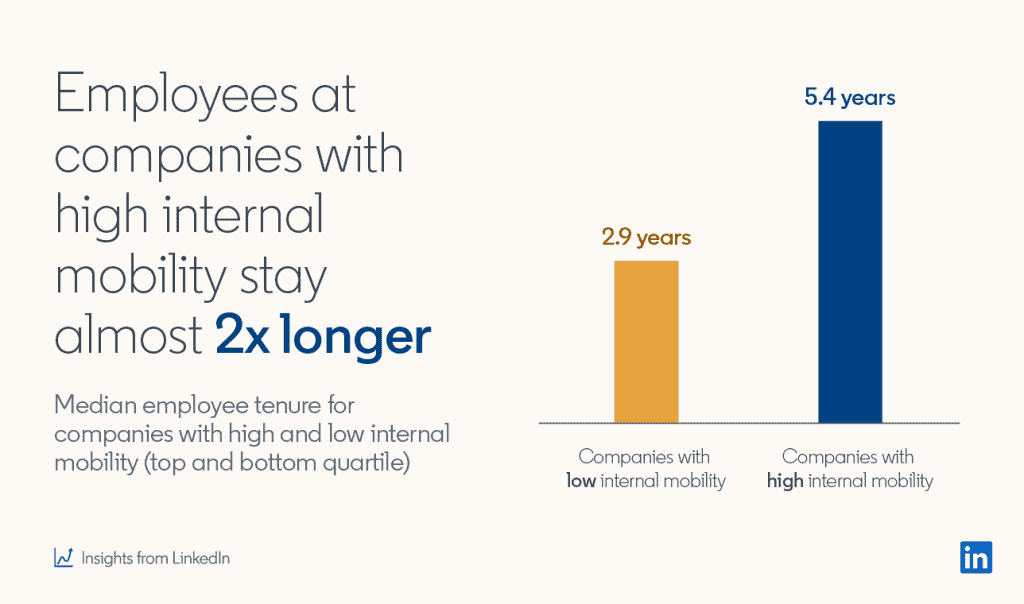Workforces are constantly changing. As employees transition in and out, they may leave behind organizational gaps. The savvy manager’s quick solution? Backfilling is one of ’em.
When you backfill a position, you’re not just replacing departing staff with similarly skilled and capable individuals. Because, unlike traditional recruitment, backfilling is proactive.
HR teams that anticipate departures upskill existing employees and create processes to find replacements do far better at maintaining operational continuity and productivity.
That should resonate if you have ever struggled to replace a great employee. But what does it take to backfill effectively? That’s what we’re here to learn (or teach you, rather—we already know how!).
TL;DR — Key Takeaways
Backfilling is the proactive replacement of departing employees. Companies can backfill reactively. However, proactive and strategic backfilling is a better way to meet recruitment goals.
Backfilling results from retirements, terminations, promotions, temporary sickness, and resignations. By implementing a backfilling strategy, though, HR professionals can monitor patterns and better predict staffing changes.
External backfilling involves maintaining talent pools with pre-qualified potential hires to minimize the delay between staff leaving and replacements arriving.
Internal backfilling harnesses existing employee capabilities. Career development plans and internal skill databases help you track existing skills. Testing and data collection help you line up replacements and maintain continuity.
Skills testing applies to both internal and external backfilling. Toggl Hire‘s testing and talent pool management functions make locating replacements with the right skill set and experience easy.

What is a backfill position?
Backfilling a position involves identifying replacements for previous job role occupants, sometimes even before an employee leaves.
It’s a common challenge that virtually every business faces. Retirements, promotions, or extended leave all result in vacancies. When that happens, you need processes to fill the gap(s).
After all, in most cases, current employees struggle to compensate for a lack of skills in critical roles (and it shouldn’t be their job to do so anyway). As a result, productivity dips, employee turnover grows, and hiring costs rise.
Backfill positions vs. regular replacement
You might wonder why you should treat backfilling positions differently to regular hires. The answer is pretty subtle but has significant recruitment implications, so it’s worth exploring.
Traditional recruitment is typically reactive. Companies lose employees for various reasons. Once that happens, they advertise the role, assess candidates, and choose a replacement.
This recruiting pathway, however, is time-consuming, while strategic backfilling is often a more effective alternative for filling vacant roles quickly. Here’s why…

To backfill positions, HR teams track potential vacancies before they occur. For example, companies can predict and plan for retirements or promotions ahead of time. These kinds of departures should never come as a total surprise.
For less predictable vacancies, proactive sourcing helps to fill positions faster, permanently or temporarily. Talent pool management — maintaining reservoirs of potential candidates for each position — also comes into play.
Ultimately, using backfill recruiting techniques is efficient and fast and minimizes disruption to workflows.
Reasons to backfill a position
If backfilling still sounds abstract, this next section should help, as it’s not that complex.
In the six different recruitment scenarios below, we’ll show you how backfilling streamlines hiring over time. Implemented well, it simplifies how you fill positions and maintains those all-important skill levels.
Resignation
Staff resignations send shockwaves through teams. They can disrupt project timescales, lead to disputes about workloads, and severely hurt morale across the entire organization. Resignations can also trigger other staff departures, creating a cascade of bad outcomes.

Of course, you can’t always predict resignations, but what you can do is create a backfill plan for the most key positions. When staff leave, continuity plans kick in. Internal promotion or lining up a replacement can help maintain performance levels and ensure a smoother transition.
Termination
Terminations often result from performance failures that have already disrupted workflows. Removing the problematic employee may solve these issues, but it leaves a dysfunctional situation and a void to fill.
On the positive side, managers can often anticipate terminations at least a few weeks beforehand. Even so, backfill recruiting helps. Planning strategic replacements reduces the risk of future failures. Quick hiring (not to be confused with rushed hiring) also helps stabilize teams and contain the fallout.
Sick leave
Sickness is a fact of life that your HR department should plan for (however few do). Critical employees may take temporary leave to handle mental health issues, or they may need more time to recover from operations or chronic conditions.
In any case, you can use backfilling strategies to source temporary replacements. Maintaining pools of external freelancers helps in cases like this. You can also assess internal skills and shortlist existing employees to backfill a position when the original employee is absent.
Vacation
Ideally, generous vacation time helps employees relax and refresh. However, even brief absences can lead to decreased productivity. Emergencies can happen at any time, so it’s important to have contingency plans in place.
Backfilling sources are the best internal substitutes for vacationing employees, especially if they’ll be out long-term on something like a sabbatical. You can assign employees to cover certain responsibilities for critical roles as long as they have the right mix of skills and experience (and it makes sense, given their salary and other responsibilities, to do so).
Promotions
Promotions generally create vacancies as employees move into more senior positions. Sometimes, employees share roles and responsibilities until a replacement arrives. More commonly, someone else steps in to cover the previous role, which backfilling can help with.
Backfilling allows you to arrange interim appointments from within. With competent interim staff, you can source external candidates or upskill the temporary occupant. However, upskilling only works if you have the right person in position.
Retirement
Retiring employees tend to occupy senior roles. Without proper planning, retirees take skills and experience with them, leaving the company in limbo and making it harder to maintain productivity.
Backfilling avoids worst-case scenarios, allowing HR teams to plan retirements and start recruiting quickly.
In fact, a new employee should arrive before the previous person departs. This leaves room for handovers and mentoring. When done correctly, transitions are smooth, and knowledge loss should be minimal.
Whether you’re backfilling a position due to someone’s retirement or promotion, it’s always helpful to perform a talent gap analysis, which can help you determine you’r company’s current long-term goals and what skills the workforce needs to achieve those goals. Then, assess existing talent to see if you have any internal employees who have the skills you need.

Best practices for backfilling a position
Backfilling has many uses in modern hiring, but successful backfilling requires a systematic approach. To save time and money when a key employee leaves, we recommend the three best practices below.
Passive recruitment
Talent pools allow you to collect, categorize, and nurture potential hires. This enables you to passively recruit talented individuals. When backfilling vacancies occur, possible replacements are primed to receive notifications and keen to apply.
You don’t need to waste resources filtering hundreds of resumes for every position. With a well-maintained talent pool, the right candidates will come to you.
Candidate sourcing
Cast your net widely with creative sourcing strategies. Use social media, recruitment events, job boards, and relevant publications to reach candidates for backfill positions.
Plan the best sourcing channels for each backfill position. Sometimes, social media is the best option. Specialist platforms make more sense for technical roles, such as software engineers. Research where you are most likely to find strong candidates.
Professional development
Internal recruitment is the third pillar of effective backfilling. If possible, promoting an existing employee is often the best way to backfill a position.
Maximize your chances of internal backfilling by investing in career development. Assess each employee’s skill set and provide training opportunities. Prioritize internal promotions, rewarding determined employees who upgrade their abilities.

How to backfill positions with great talent
Speed matters when you backfill a position, but quality is just as important. Haphazard methods increase the risks of bad hires and employee churn, leading to repeated recruitment processes and costly disruptions.
Backfilling strategies ensure rapid replacements with the skills required. Here’s how they work.
Identify at-risk employees
The first stage in filling a backfill position is identifying potential employee exits. Retirements don’t usually come as a surprise, but anticipating departures due to mismatched expectations or extended parental leave is harder.
However, you can still assess the likelihood of each role becoming a vacant position. And as part of that, you should work to retain staff at all costs.
Invest in career development and training, explain promotion routes, and prioritize internal advancement in hiring decisions. Foster a transparent work environment where employees are keen to notify managers if they’re thinking about leaving.
Create a skills database
Secondly, hiring managers should build a database of employee skills. Digital tests assess skills related to role competencies, and you can store that information in a database full of employee interests and skill test results.
This data is invaluable when backfilling a position. It lets you map existing staff to vacant roles to find internal replacements with the ideal skills needed for them to actually succeed in that role.
Database management requires a systematic approach to function efficiently, though. There are a few different ways to do this. We like the 9-box grid technique, which captures plenty of information in an understandable format.
If you’re unfamiliar with it, the 9-box grid system grades employees based on performance and potential on a 3×3 grid (see below). This planning tool identifies who needs extra training, who can be trusted, and who is an underperforming employee at risk of replacement.

Upskill your employees
Upskilling gives you options, improves performance, and tends to boost morale. When your skills database identifies gaps in your workforce, upskilling isn’t just something that’s ‘nice to do,’ it’s essential.
Ideally, junior employees have the necessary skills to step up on a temporary basis. Highly skilled junior project managers can step into a newly vacant position should team leaders step down, for example.
Another variant of upskilling is cross-training employees, which is when someone learns a new set of skills to fill a position for which they were not initially qualified.
Create mentorship programs
Strong vertical links between managers and team members make backfilling easier. Mentorship programs transmit experience and knowledge to junior staff, while mentored employees gain confidence to assume additional responsibilities and adapt to a new position quickly.
Mentorship also encourages staff to evolve. For instance, coders at a web development company often work on tightly focused systems or assets. Mentors can help them broaden their horizons, introducing junior staff to management challenges like dispute resolution and reporting to executives.
That kind of mentorship enables staff to become more than coders or analysts. They become potential leaders and dedicated employees.
Outsource to freelancers
Backfilling a position might require you to have a Plan C. Sometimes, internal appointments won’t work. In that case, you’ll have to look outside the company.
So, maintain a database of trusted freelancers with niche expertise. These professionals can step up to the plate at short notice before you hire a permanent replacement. In the best cases, they might be open to filling the role permanently if it’s a fit for both parties.
You can also rely on employee referrals. Team members may know someone who is available and a perfect fit for your vacancy.
When hiring external talent, be sure to communicate role requirements. Freelancers should know how to meet your needs from day one. If possible, use a brief interview process to compare temporary workers (but skills tests are often easier to administer and just as informative, especially when working with freelancers).
Use skills testing to fill a vacant position
Whether you need a six-month backfill position or are recruiting a permanent security officer, you first need to know which candidates have the required skills.
And as a hiring manager, you need to fill roles quickly with minimal disruption. Weeks of interviews just won’t work. So what’s the alternative?
At Toggl Hire, we’re huge fans of customized skills testing. Our tools let hiring managers create tests for technical and soft skills using questions created by subject matter experts. You can also mix questions to suit every job description.
Candidates benefit from a smooth, enjoyable experience (and detailed feedback, even for unsuccessful applicants), leaving you time to objectively compare results and pick the best new hire.
Create a free Toggl Hire account and start backfilling positions with the best available talent today.
Elizabeth is an experienced entrepreneur, writer, and content marketer. She has nine years of experience helping grow businesses, including two of her own, and shares Toggl's mission of challenging traditional beliefs about what building a successful business looks like.






